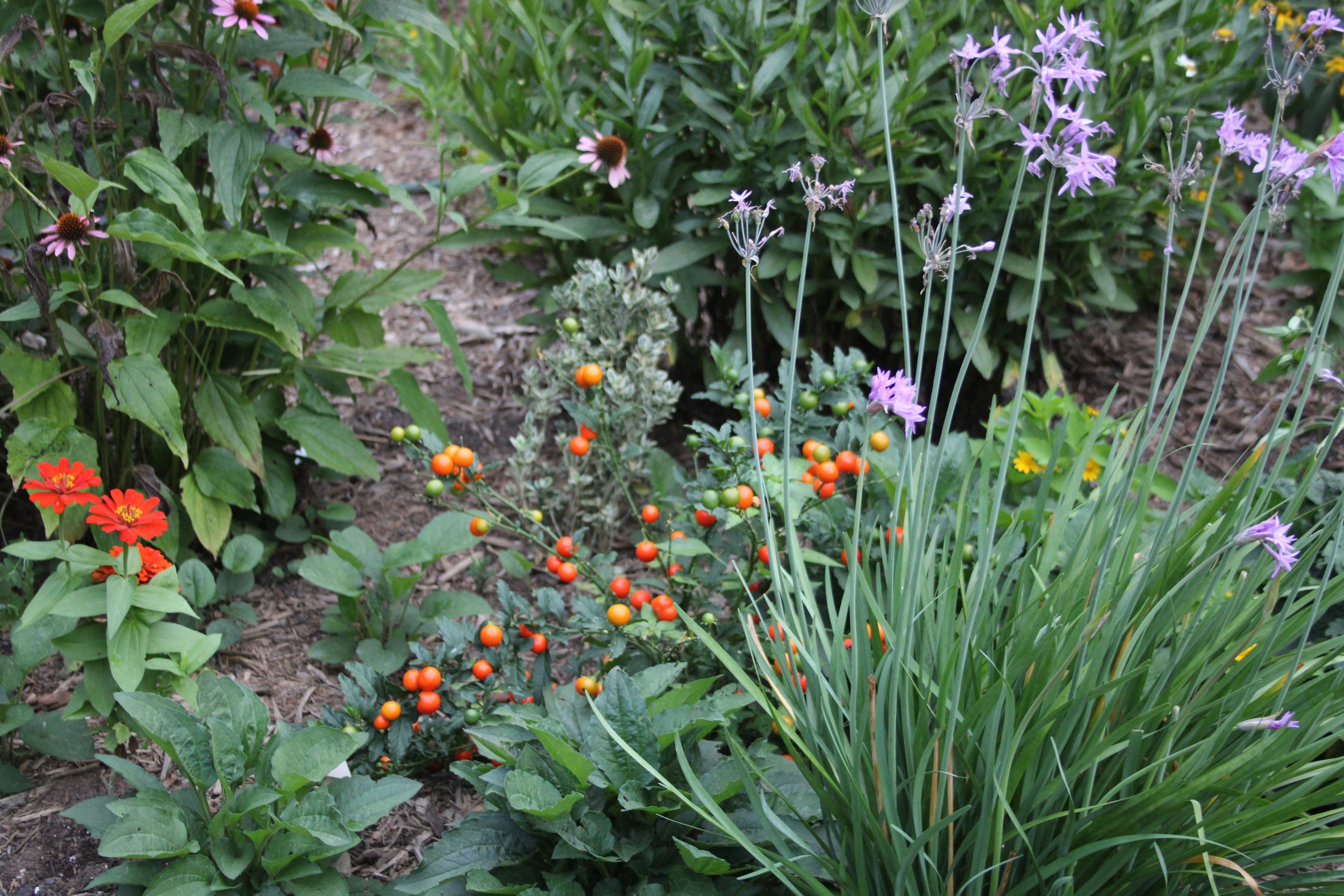Southeastern gardeners expect July and August to be hot, but the past week has been brutal across most of the country. Millions of Americans experienced “feels like” temperature of 100 degrees or more. Utility providers are pleading for users to reduce their consumption and water restrictions are in place. Everywhere, gardens suffer. I do not have inground irrigation and I refuse to pamper finicky plants. Through the years, I have found a few flowers that will withstand my tough love approach and bloom through steamy weather, with a minimal amount of supplemental water.
Clusters of lavender Society Garlic contrast with the yellow flowers of Rudbeckia, behind. The grass-like foliage has a skunky odor if crushed. Rabbits and deer avoid it.
The small flowerbed close to our entrance is planted with yellow, purple, and orange heat lovers. Purple Coneflowers (Echinacea purpurea ), several Salvia selections, and Society Garlic (Tulbaghia violacea) have purple or lavender flowers, while Purple Heart (Tradescantia pallida) offers violet foliage. They contrast nicely with the butter yellow flowers of annual Melampodium (one of my top performers) and the towering yellow Coneflower, Rudbeckia ‘Herbstonne.’ Orange Butterfly Weed (Asclepias tuberosa) flowers in late spring. I cut it back by half and it reblooms in July and August. Finally, Jerusalem Cherry (Solanum pseudocapsicum) has bright orange, inedible fruits that glow against dark green foliage. Jerusalem Cherry can be invasive, so I keep a careful eye on it, removing spent fruits before they can reseed. It was a heritage plant whose ancestors grew in my grandparents’ garden when I was a child. Just to keep things lively, a trio of Shasta Daisy ‘Becky’ contribute a pop of white, with orange-yellow centers. Lots of color, with limited effort.
Other plants that will withstand heat include Lantana, Butterfly Bush (look for sterile Buddleia like the Pugster® series to avoid reseeding), Zinnia, Spider Flower (Cleome hassleriana), Cosmos (both C. sulphurens and C. bipinnatus), Ice Plant (Portulaca), and Turk’s Turban (Malvaviscus). The first three will benefit from deadheading, but the others eject spent flowers unaided.
As our weather patterns change, gardeners can be good stewards of our resources by transitioning away from super-thirsty plants to those that will thrive with less. We do not need to restrict ourselves to only Cacti and desert plants. Small changes made by many people result in large water-use reduction.
Instead of spreading thirsty plants across the entire garden, clustering them in one area will reduce the need for dragging a hose around. Watering your heavy drinkers with a soaker hose will reduce water lost to evaporation. Mulch will reduce evaporation and keep soil cooler.
The butter-yellow flowers of Melampodium contrast with the violet foliage of Purple Heart.
The orange fruits of Jerusalem Cherry draw attention. The orange Zinnia to the left was self-seeded, a volunteer from last year’s dropped seeds. Behind the Society Garlic, peep the yellow flowers of a young Melampodum, also a volunteer seedling.


